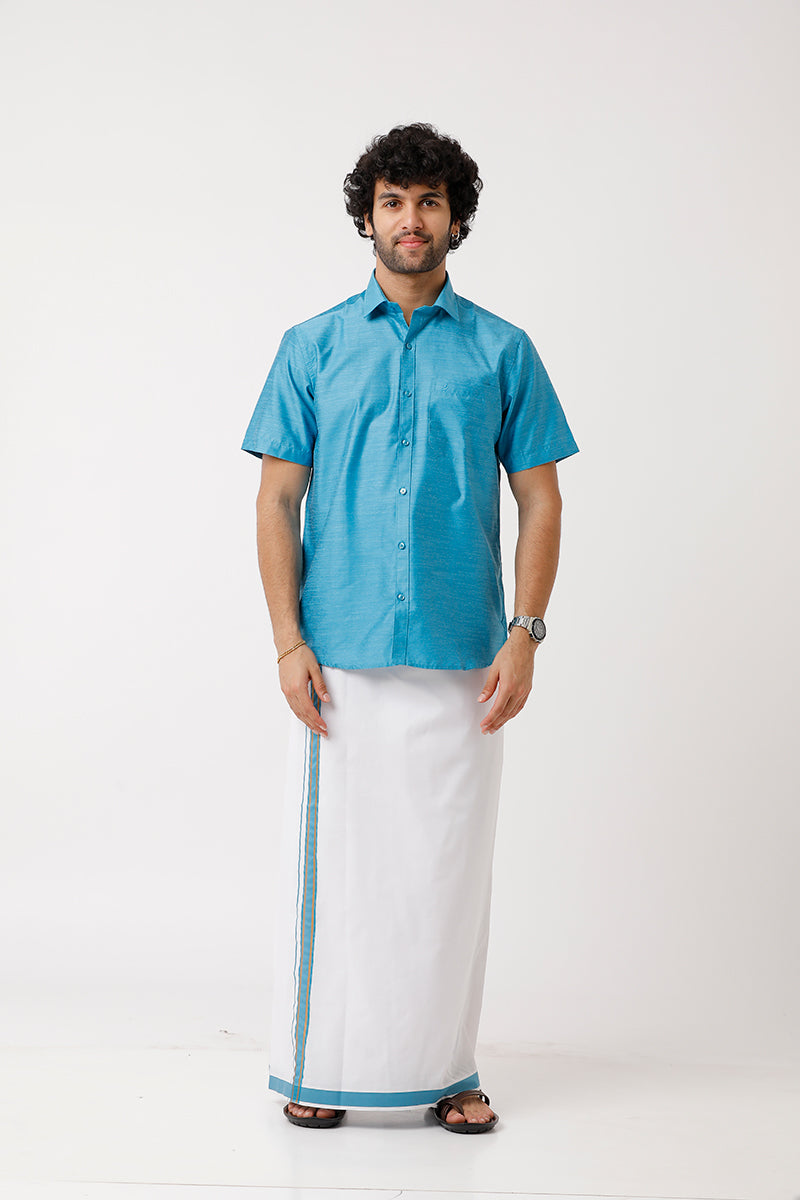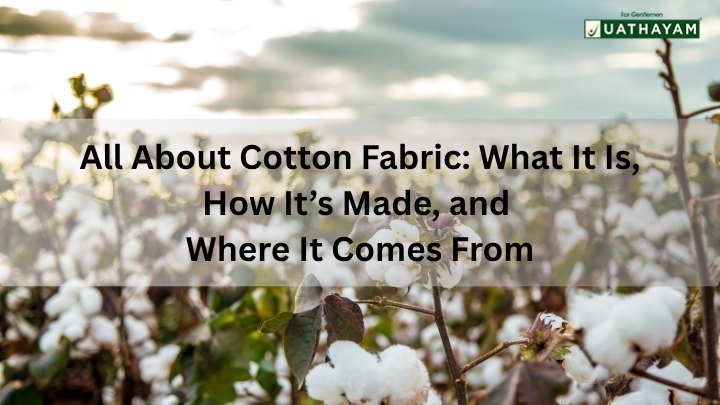What Is The Differences Between Ethnic Wear and Traditional Wear?
India, a land of rich cultural heritage and diversity, boasts an extensive tapestry of traditional attire. The sartorial elegance displayed across various regions encapsulates the essence of India's vibrant history and cultural nuances.
When exploring the fashion world, one often encounters terms like Ethnic Wear and Traditional Wear. While these terms may seem interchangeable at first glance, a closer examination reveals nuanced disparities that define and distinguish each category.
This comprehensive guide delves into the distinctive features, historical significance, and contemporary contexts that differentiate Ethnic Wear from Traditional Wear

What is Ethnic Wear?
Ethnic Wear embodies the cultural richness and traditional heritage of India. It encompasses a wide array of clothing, each resonating with the distinctive identity of various regions. The exquisite craftsmanship and intricate designs are hallmark features of Ethnic Wear.
From the splendid sarees of South India to the regal lehengas of North India, Ethnic Wear captures the essence of tradition in its finest form.
The craftsmanship of Ethnic Wear reflects the rich heritage passed down through generations. Skilled artisans meticulously handcraft these garments, incorporating traditional techniques and embellishments that have stood the test of time.
Embroidery, beadwork, zari, and intricate threadwork are prevalent in Ethnic Wear, adding an opulent charm that defines its elegance.
What is Traditional Wear?

Traditional wear is a broader category encompassing clothing styles specific to various communities and social groups. It transcends regional boundaries, encapsulating the pan-Indian identity. Formal attire is often worn during significant life events, ceremonies, or religious functions, reflecting the wearer's cultural background.
For instance, the classic white shirt and dhoti combination in Indian culture epitomizes the traditional attire with a rich historical legacy. Formal Wear Weardies the essence of an era, symbolizing the prevailing fashion norms and styles of a particular time in history.
The allure of traditional wear lies in its time-honoured elegance. These garments have stood the test of time, from the majestic dhoti-kurta ensemble for men to the resplendent ghagra-choli for women. The intricate embroidery, elaborate patterns, and use of rich fabrics contribute to the regality associated with traditional Indian attire.
Key Differences Between Ethnic Wear and Traditional Wear
Ethnic and traditional wear hold significant cultural value, yet they possess nuanced disparities that delineate their essence, style, and cultural significance.
Cultural Significance:
The primary divergence between ethnic wear and traditional wear lies in their cultural significance. Ethnic wear is a broader spectrum encompassing attire that represents the cultural identity of a specific ethnic group or region, often featuring intricate embroidery, vivid colours, and unique designs.
On the contrary, traditional wear embodies clothing adhering to societal customs and rituals, symbolizing cultural continuity and values within a community.
Style and Design Elements:
The distinction in style and design constitutes another notable dissimilarity. Ethnic wear boasts an eclectic mix of fabrics like silk, cotton, chiffon, and more, with embellishments such as zari work, mirror work, and intricate embroideries. This attire often exhibits style versatility, accommodating various preferences while preserving cultural authenticity.
Conversely, traditional wear emphasizes adherence to specific dress codes and design patterns prevalent within a community. This attire is steeped in heritage, featuring unique motifs, practices, and fabrics distinctive to a particular region or cultural group. The designs are often time-honoured, passed through generations, and deeply ingrained in the community's identity.
Occasions and Usage:
Ethnic wear is often donned during cultural celebrations, festivals, weddings, and formal events, showcasing cultural pride and identity. Its versatility allows individuals to experiment with different styles while maintaining a cultural connection.
Contrarily, traditional wear is prominent in adhering to customary practices and rituals, such as religious ceremonies, rituals, or specific occasions that demand adherence to established customs.
Evolution and Adaptation:
While both categories honour historical legacies, Ethnic Wear often evolves and adapts to contemporary fashion trends without compromising its cultural essence. Designers fuse modern elements and innovative styles into traditional garments, creating a fusion that appeals to the evolving tastes of global fashion enthusiasts.
In contrast, Traditional Wear remains rooted in its historical authenticity, tributing fashion from bygone eras without significant alterations.
Global Appeal and Influence:
The allure of Ethnic Wear extends far beyond its cultural origins, garnering international acclaim for its intricate craftsmanship and timeless elegance. Fashion enthusiasts worldwide embrace ethnic attire for its uniqueness, fostering a global appreciation for diverse cultural expressions.
Conversely, Traditional Wear holds a more niche appeal, revered for its historical significance and preservation of traditional fashion but often confined to specific cultural contexts.
Why Many Indians Prefer Traditional Wear in Occasions?
Among the myriad choices available for special occasions, the combination of a dhoti and a crisp, immaculate white shirt holds a special place in the hearts of many Indians.
Let's delve into the cultural significance, comfort, and evolving trends that make this ensemble a preferred choice for various celebrations.
Embracing Cultural Roots:
Dhoti, a traditional Indian garment, has been integral to the country's cultural heritage for centuries. Worn by men across different regions, it signifies a deep connection to one's roots and traditions. The intricate draping of the dhoti is not just a style; it's a cultural statement. Pairing it with a white shirt adds a touch of modernity while respecting the timeless essence of the ensemble.
Celebrating Diversity:
India is a melting pot of cultures with unique customs and traditions. The dhoti and white shirt combination transcends regional boundaries, making it versatile for various occasions, from weddings to religious ceremonies. Its adaptability reflects the unity in diversity that defines the cultural fabric of India.
Comfort Beyond Comparison:
Beyond its cultural symbolism, the comfort offered by the dhoti and white shirt ensemble is unparalleled. The free-flowing design of the dhoti allows for ease of movement, making it an ideal choice for festive occasions that involve rituals, dances, and festivities. The breathable fabric of the white shirt complements the dhoti, ensuring comfort even in the warmest climates.
Style and Sophistication:
While comfort is paramount, the dhoti and white shirt combination doesn't compromise style. The minimalist elegance of a well-draped dhoti paired with a neatly pressed white shirt exudes sophistication. This ensemble effortlessly blends tradition with a contemporary flair, making it a sartorial choice that resonates with individuals seeking a timeless yet modern look.
Trending Traditions:
In recent years, there has been a resurgence of interest in traditional Indian wear, driven by a desire to embrace one's heritage. Once confined to specific occasions, the dhoti and white shirt combination is now making its mark in the fashion landscape. Fashion influencers and designers are reimagining this classic ensemble, introducing variations that appeal to the younger generation.
Conclusion
The distinction between ethnic wear and traditional wear in India goes beyond mere semantics. It celebrates diversity, reflecting the country's rich tapestry of cultures, traditions, and customs. Each garment tells a story, weaving together the threads of the past and the present.
As fashion enthusiasts, let us embrace India's sartorial diversity, cherishing both the timeless allure of traditional wear and the ever-evolving charm of ethnic wear. After all, in this land of colours and contrasts, every garment is a brushstroke on the canvas of cultural expression.
Are you on the hunt for the epitome of traditional elegance?
Look no further! Uathayam Online Stores brings you the finest Dhotis and White Shirts collection that redefines sophistication and style.






